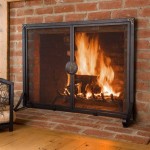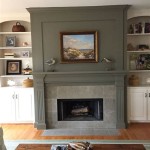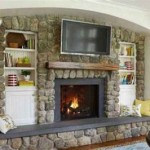How to Convert a Wood-Burning Fireplace to Gas
Converting a wood-burning fireplace to gas can offer numerous benefits, including convenience, reduced mess, and increased efficiency. However, this process requires careful planning and professional installation to ensure proper safety and performance. This article will guide you through the key steps involved in converting your existing fireplace to gas.
1. Assess Your Fireplace and Gas Supply
Before embarking on the conversion process, a thorough assessment of your fireplace and existing gas supply is crucial. This assessment will help determine the feasibility of the conversion and identify any necessary modifications.
First, inspect your fireplace's existing structure. It's essential to have a firebox with a sufficient size and a chimney that can accommodate a gas fireplace insert. The chimney should be properly lined and inspected for any cracks or damage. If your chimney needs repairs, address them before moving forward with the conversion.
Next, evaluate your gas supply. Determine if you have a natural gas line or a propane tank available near your fireplace. If you have a natural gas line, you'll need to assess its capacity and ensure it can handle the additional demand from the gas fireplace. Propane installations require a dedicated tank, and the size of the tank will depend on your fireplace's gas consumption.
2. Choose a Gas Fireplace Insert
The heart of your gas fireplace conversion is the gas fireplace insert. Various options are available on the market, ranging from traditional log sets to realistic flames and contemporary designs. Consider factors like size, heat output, aesthetic appeal, and budget when making your selection.
Measure your fireplace opening to ensure the insert will fit properly. Consider the desired heat output based on the size of your room. Look for inserts with energy-efficient features, like a variable flame control and a pilotless ignition system. Also, explore different styling options to complement your fireplace's existing design.
3. Professional Installation
Once you've chosen a gas fireplace insert, the installation process should be handled by qualified professionals. This ensures proper safety, efficient operation, and adherence to local building codes.
The professional installer will first disconnect the existing wood-burning fireplace components. They will then connect the gas line to the insert and install the insert in the firebox. This process may involve modifications to the fireplace opening, including the addition of a gas vent. The installation will involve sealing any openings to prevent gas leaks and ensure safe operation.
After installation, the professional will inspect the entire system, including the gas line, the insert, and the chimney. They will test the fireplace to ensure it operates properly and safely.

Convert From Wood To Gas With A Insert The Kernel Burner

Wood To Gas Fireplace Conversion In Wisconsin Free Quote Badgerland Waesha

Want To Convert Gas Wood Fireplace Full Service Chimney

Wood Fireplaces Gas Conversion That Counts

Gas To Wood Fireplace Conversion Overland Park Ks Firplace Service

How To Convert Your Wood Burning Fireplace Electric Or Gas

Can A Wood Burning Fireplace Be Converted To Gas The Flame Company

Want To Convert Gas Wood Fireplace Full Service Chimney

What S The Cost To Convert A Wood Fireplace Gas Orange County Register

Wood Burner Conversion New Jersey Fireplaces Kjb
Related Posts








